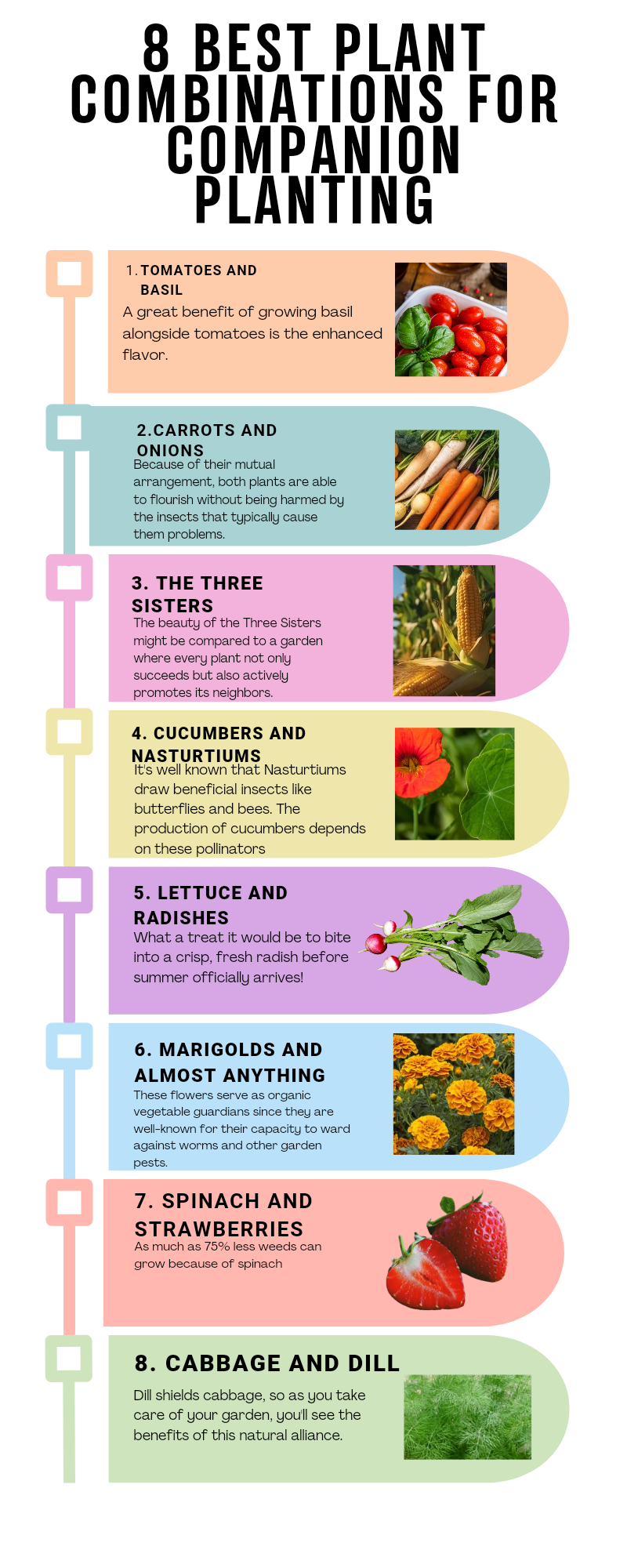Are you looking for ways to grow a better garden? Companion planting can help you. It is a simple way to plant different plants together. These plants help each other to grow well. This guide will explain what companion planting is. It will also show you which plants grow well together.
What Is Companion Planting?
Companion planting means putting two or more plants near each other. They help each other in many ways. Some plants keep bugs away. Others help the soil stay healthy. Some plants give shade to their neighbors. This helps the plants stay cool on hot days.
When you use companion planting, your garden can be healthier. You may get more fruits and vegetables. It can also reduce the need for chemicals. This makes your garden safer for you and the environment.
Why Use Companion Planting?
- Protect plants from pests: Some plants can stop bugs from eating nearby plants.
- Improve soil: Certain plants add nutrients to the soil.
- Save space: You can grow more plants in less space.
- Support growth: Some plants help others grow taller or stronger.
- Attract helpful insects: Some flowers bring bees and ladybugs to your garden.
Good Companion Plants
Here are some common plants that work well together. They help each other grow strong and healthy.
Tomatoes
Tomatoes grow well with many plants. Here are some good companions:
- Basil: Keeps bugs away and improves tomato flavor.
- Marigold: Repels harmful insects.
- Carrots: Use space well with tomatoes.
- Onions: Help keep pests away.
Carrots
Carrots grow well with these plants:
- Tomatoes: Use space well and improve growth.
- Peas: Add nitrogen to soil, which carrots like.
- Onions: Keep pests away from carrots.
Beans
Beans are great for the soil. They add nitrogen, which helps many plants. Good companions for beans are:
- Corn: Beans climb up corn stalks.
- Squash: Squash leaves shade the soil to keep it moist.
- Cucumbers: Grow well with beans.
Cabbage
Cabbage can attract pests. But some plants help protect it:
- Dill: Attracts helpful insects that eat pests.
- Onions: Keep bugs away.
- Marigolds: Repel harmful insects.
Plants to Avoid Planting Together
Not all plants grow well together. Some may fight for space or nutrients. Others may attract pests that harm neighbors. Here are some examples:
- Tomatoes and Potatoes: Both get the same diseases.
- Carrots and Dill: Dill can slow carrot growth.
- Onions and Beans: Onions may stop beans from growing well.
- Cabbage and Strawberries: They do not grow well near each other.
How to Plan Your Companion Garden
Here are simple steps to start companion planting:
- Choose your plants: Pick vegetables and herbs you want to grow.
- Check companion lists: Find which plants grow well together.
- Plan your garden space: Put good companions close.
- Leave space: Some plants need room to grow tall or wide.
- Plant in the right season: Follow planting times for each plant.
- Watch your garden: See how plants grow and change if needed.
Simple Companion Planting Layout
Here is a basic layout for a small garden. It shows where to plant some common companions.
| Area | Main Plant | Companion Plants |
|---|---|---|
| 1 | Tomatoes | Basil, Marigold, Carrots |
| 2 | Beans | Corn, Squash |
| 3 | Cabbage | Dill, Onions, Marigold |
| 4 | Carrots | Tomatoes, Onions, Peas |

Credit: thegardeningcook.com
Tips for Success
- Use healthy soil rich in nutrients.
- Water plants regularly but do not overwater.
- Remove weeds so plants get enough space.
- Watch for pests and remove them early.
- Rotate crops each year to keep soil healthy.

Credit: brothernature.ca
Benefits of Companion Planting
Companion planting helps your garden in many ways:
- Less pests: Natural bug control means fewer chemicals.
- Better harvest: Plants grow stronger and produce more food.
- Healthy soil: Some plants add nutrients to the soil.
- More beauty: Flowers and different plants make your garden colorful.
- Save space: Grow many plants in a small area.
Frequently Asked Questions
What Is Companion Planting?
Companion planting involves growing different plants together. They help each other grow by repelling pests or improving growth.
Why Is Companion Planting Beneficial?
It boosts plant health. Reduces pests naturally. Improves soil nutrients. Enhances plant growth and yields.
Which Plants Grow Well Together?
Tomatoes and basil. Corn and beans. Carrots and onions. They support each other’s growth and deter pests.
Can Companion Planting Reduce Pests?
Yes, it can. Certain plants repel pests naturally. Helps reduce the need for chemical pesticides.
Conclusion
Companion planting is a smart way to grow a garden. It uses nature’s help to grow plants well. You can protect plants from bugs and improve soil. You also get more food from less space.
Start with easy plants like tomatoes, beans, and carrots. Try putting good companions together. Watch your garden grow and learn what works best.
With patience and care, your garden will be healthy. Companion planting can make gardening fun and simple.
4 min read

